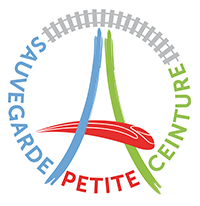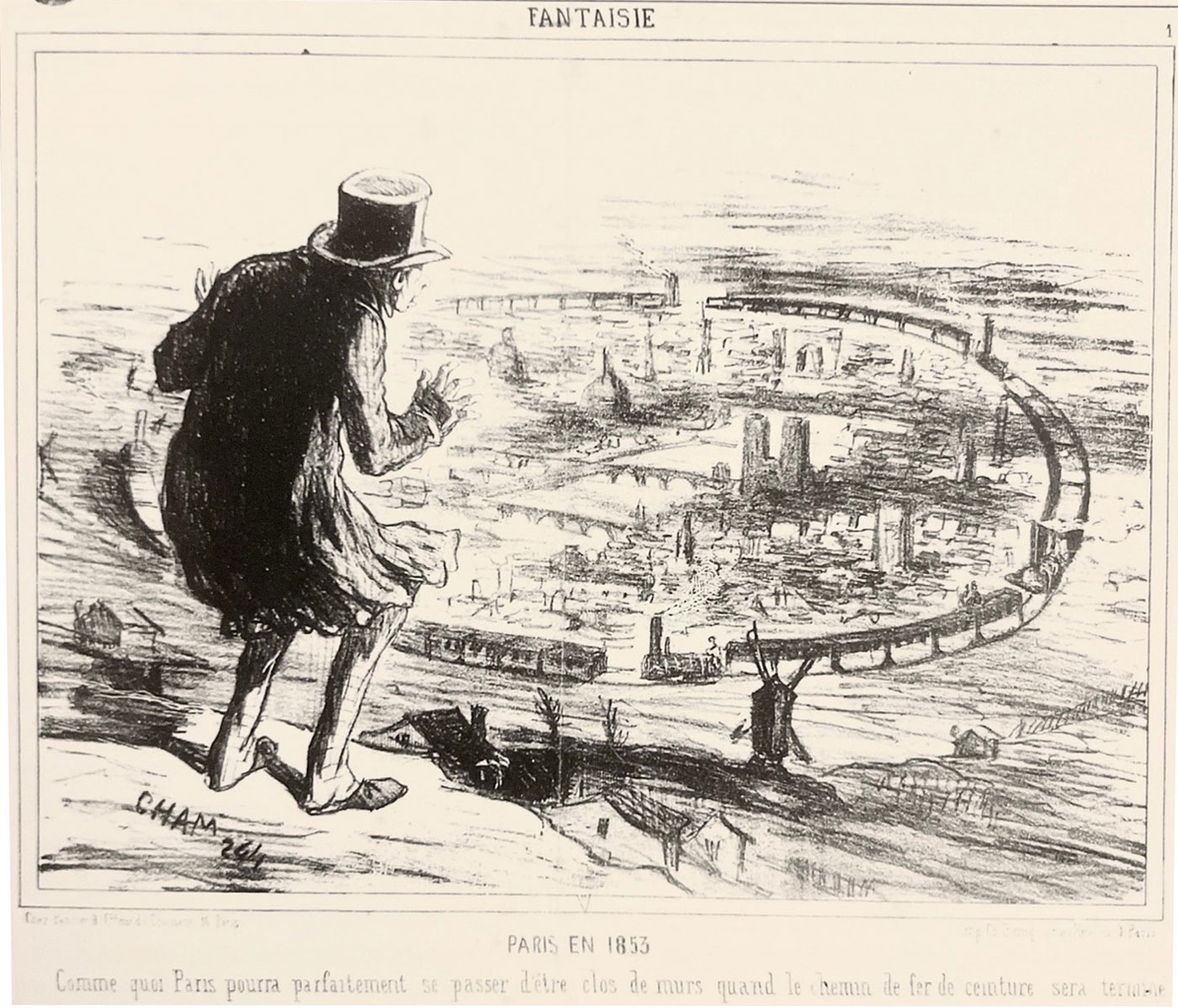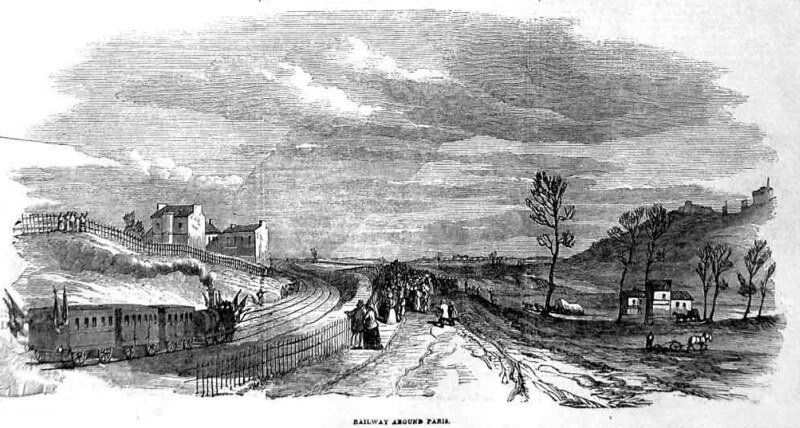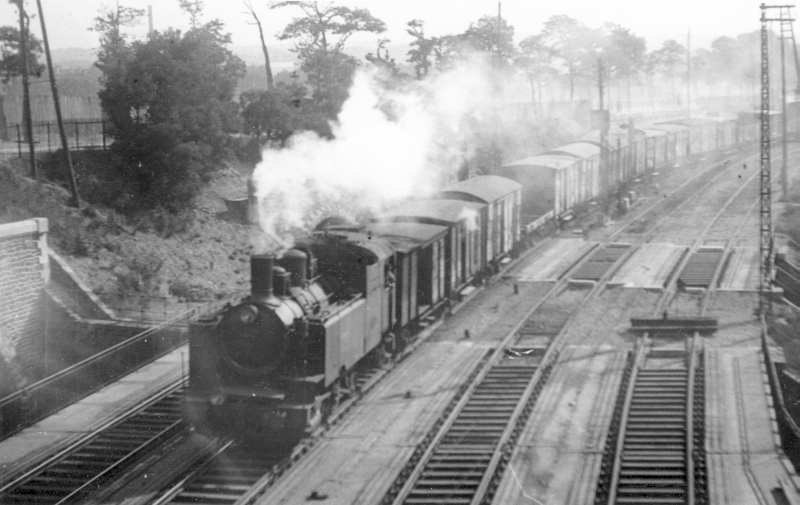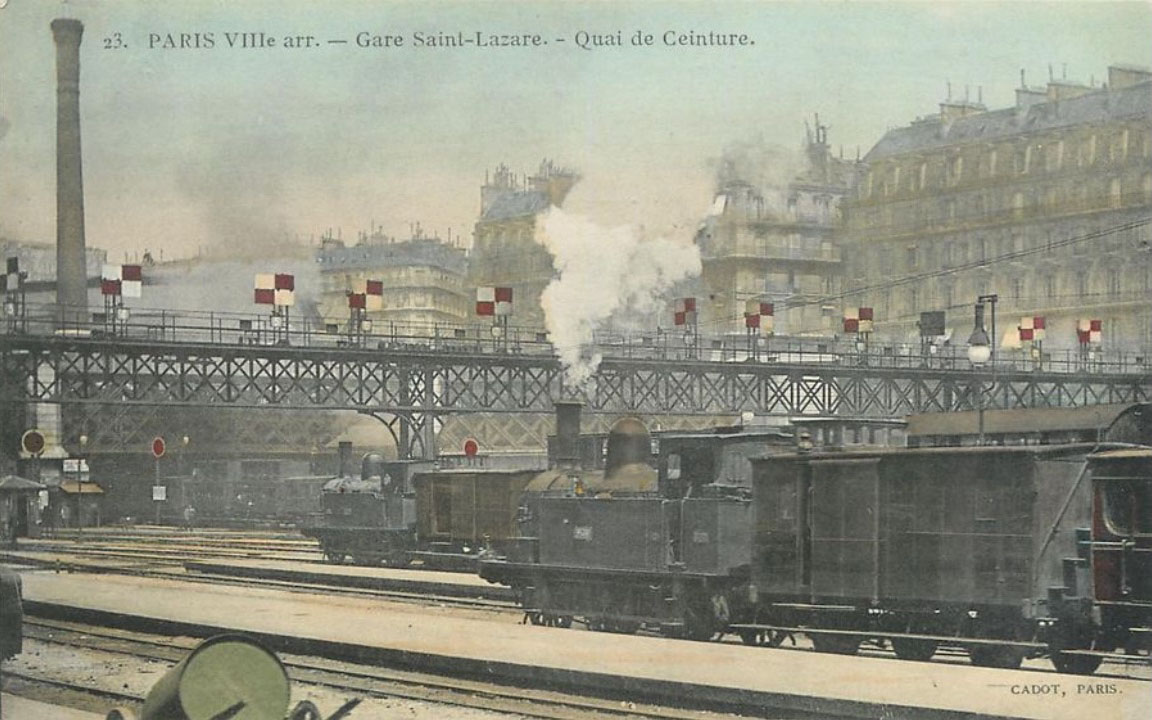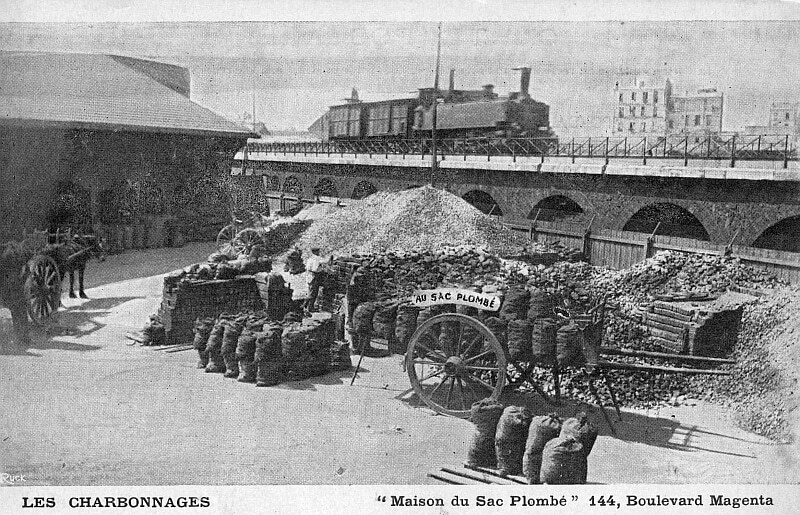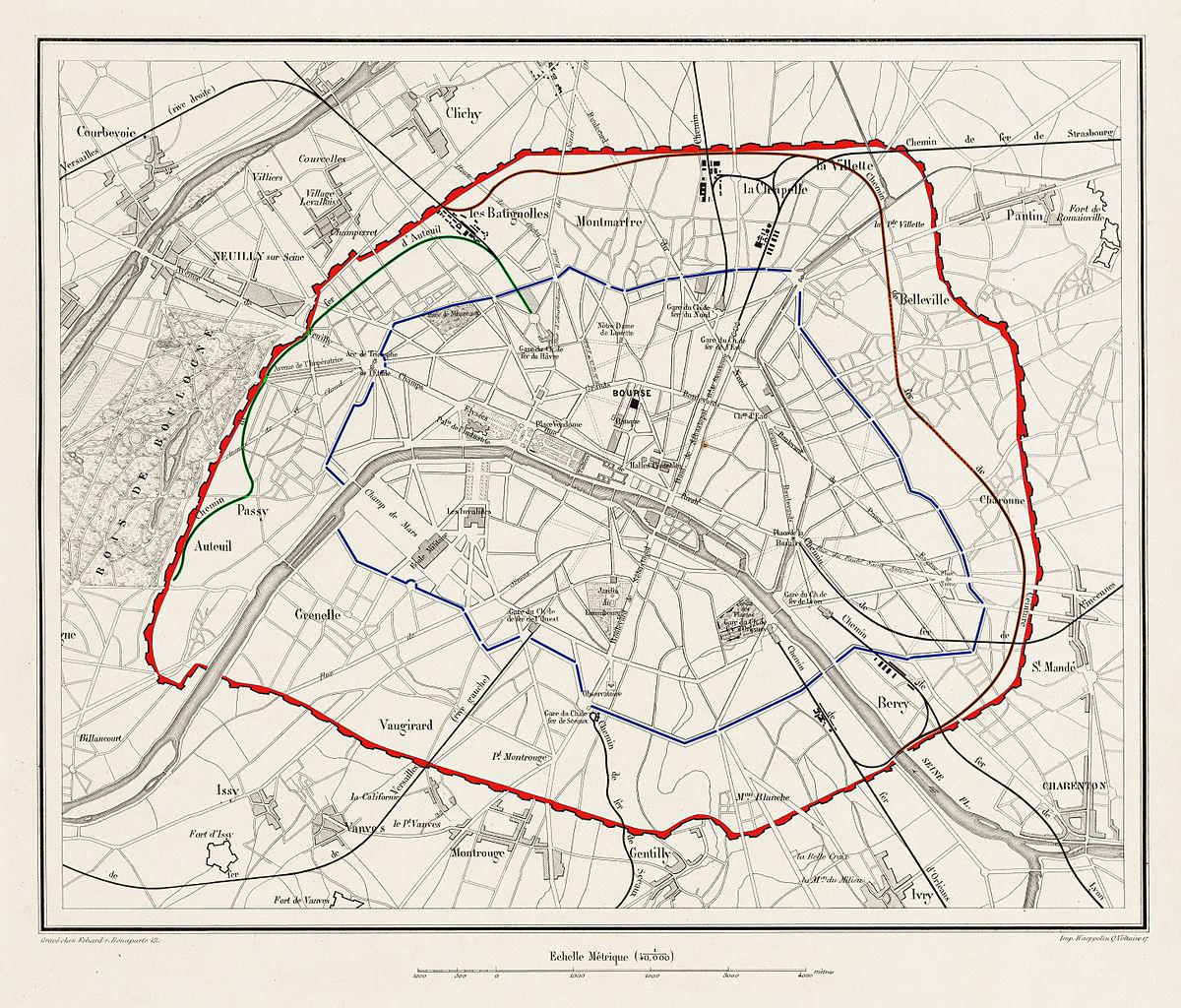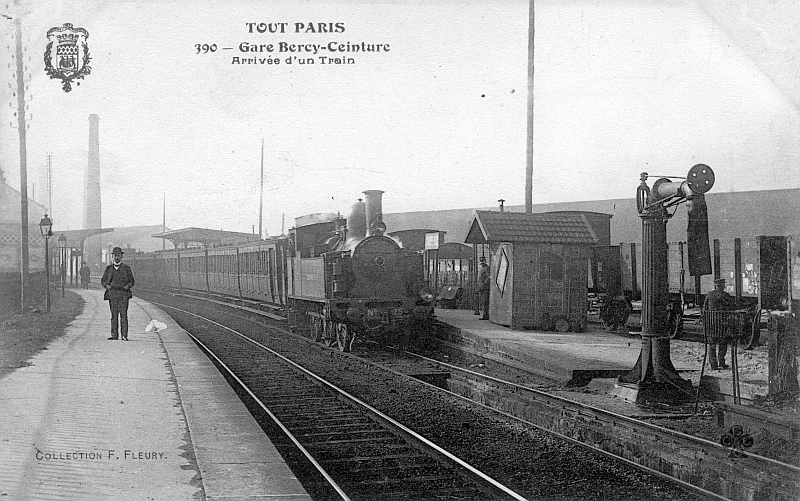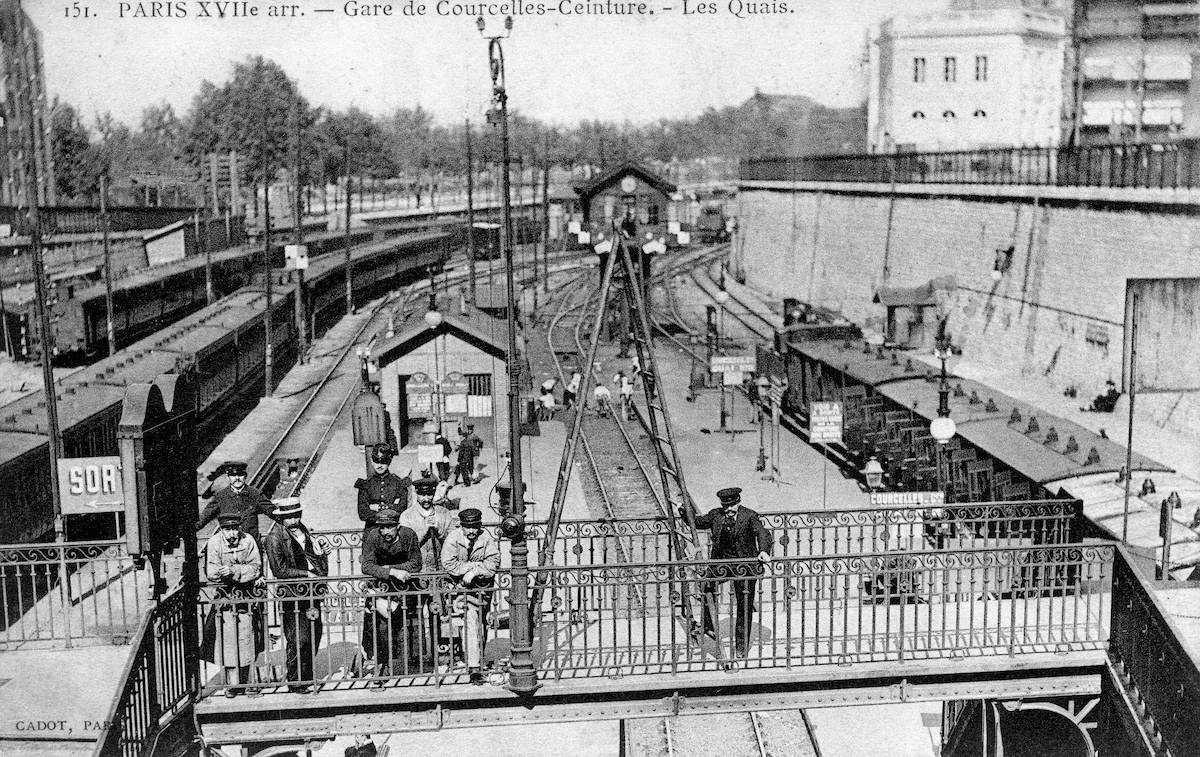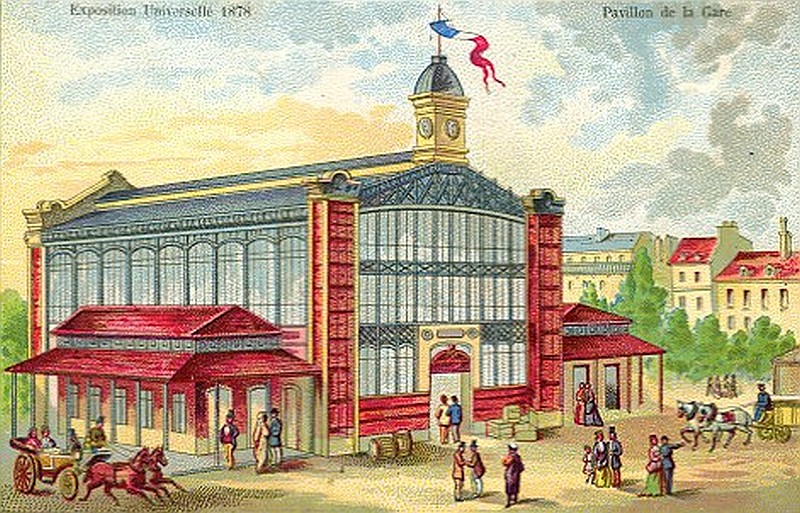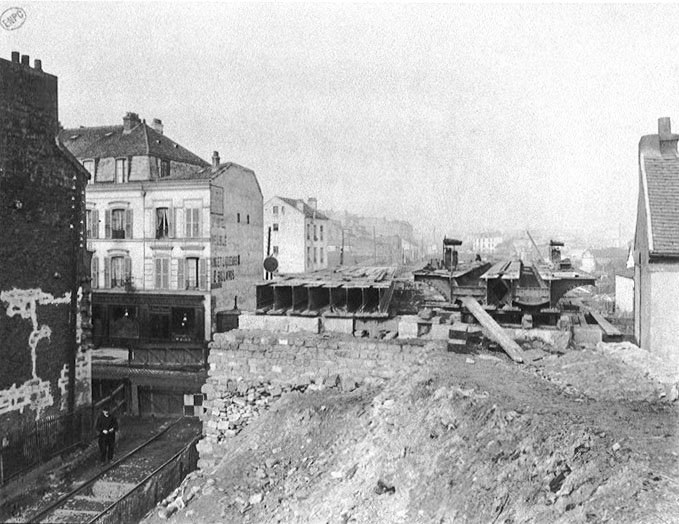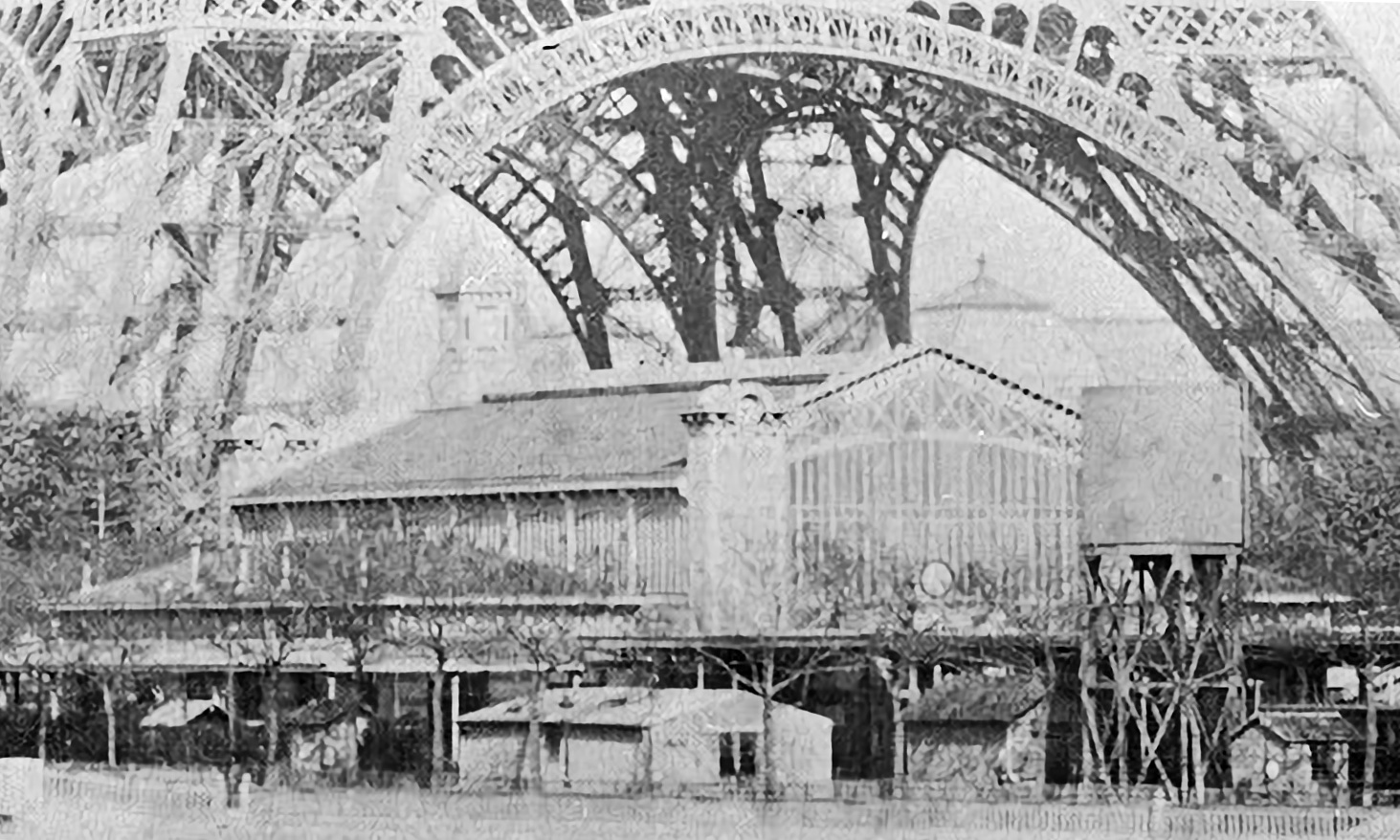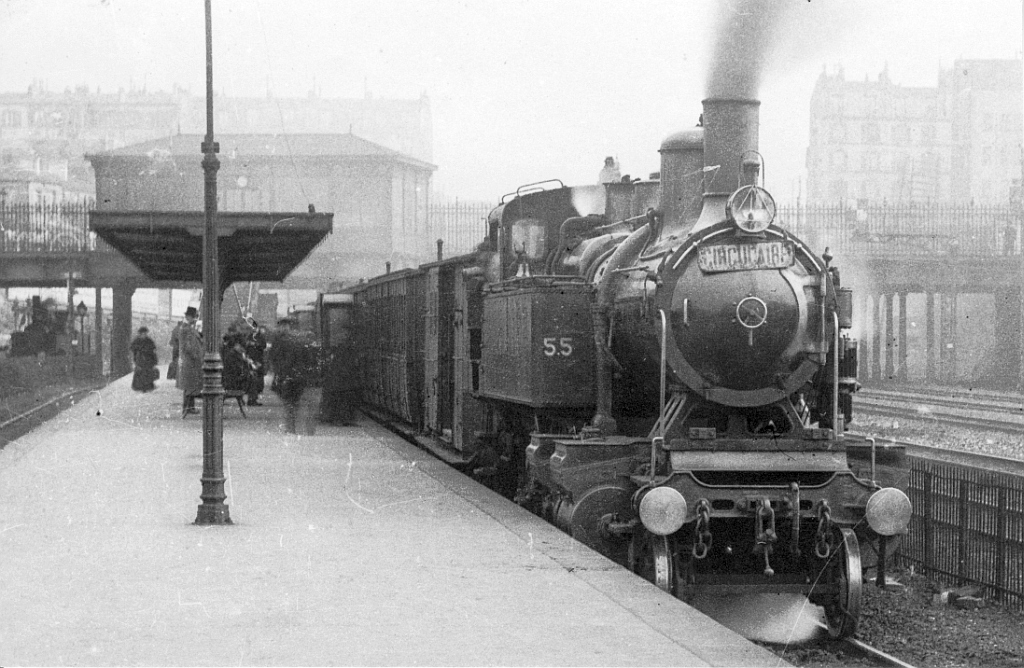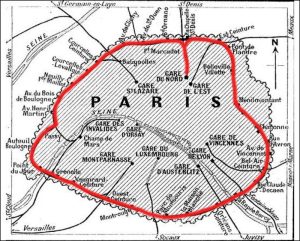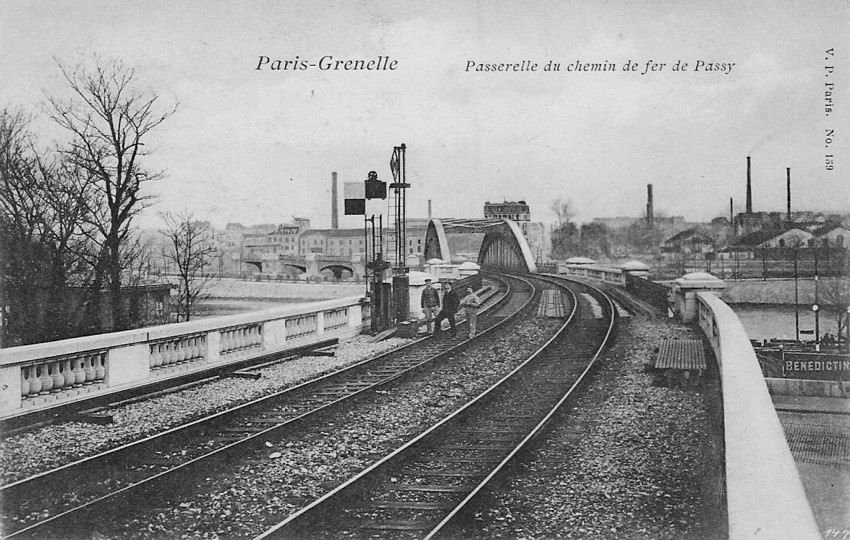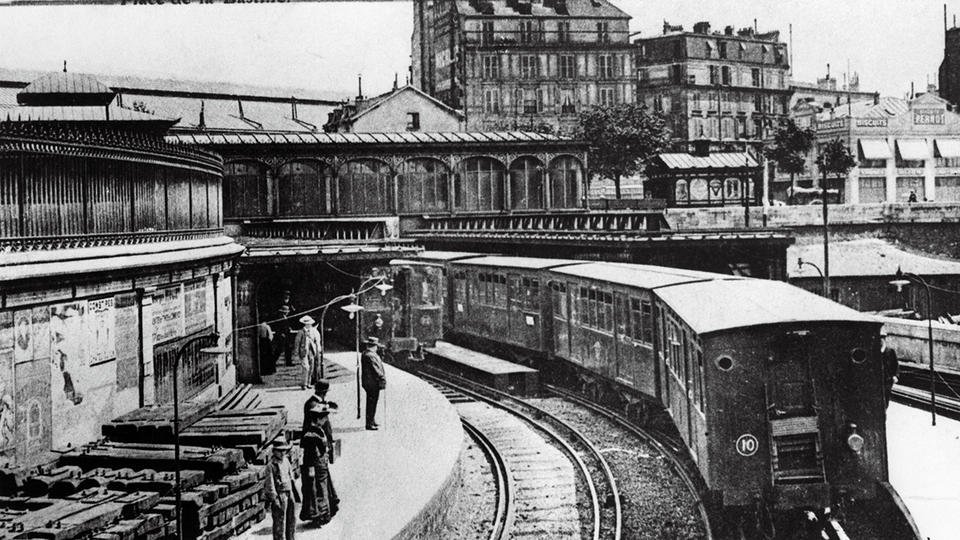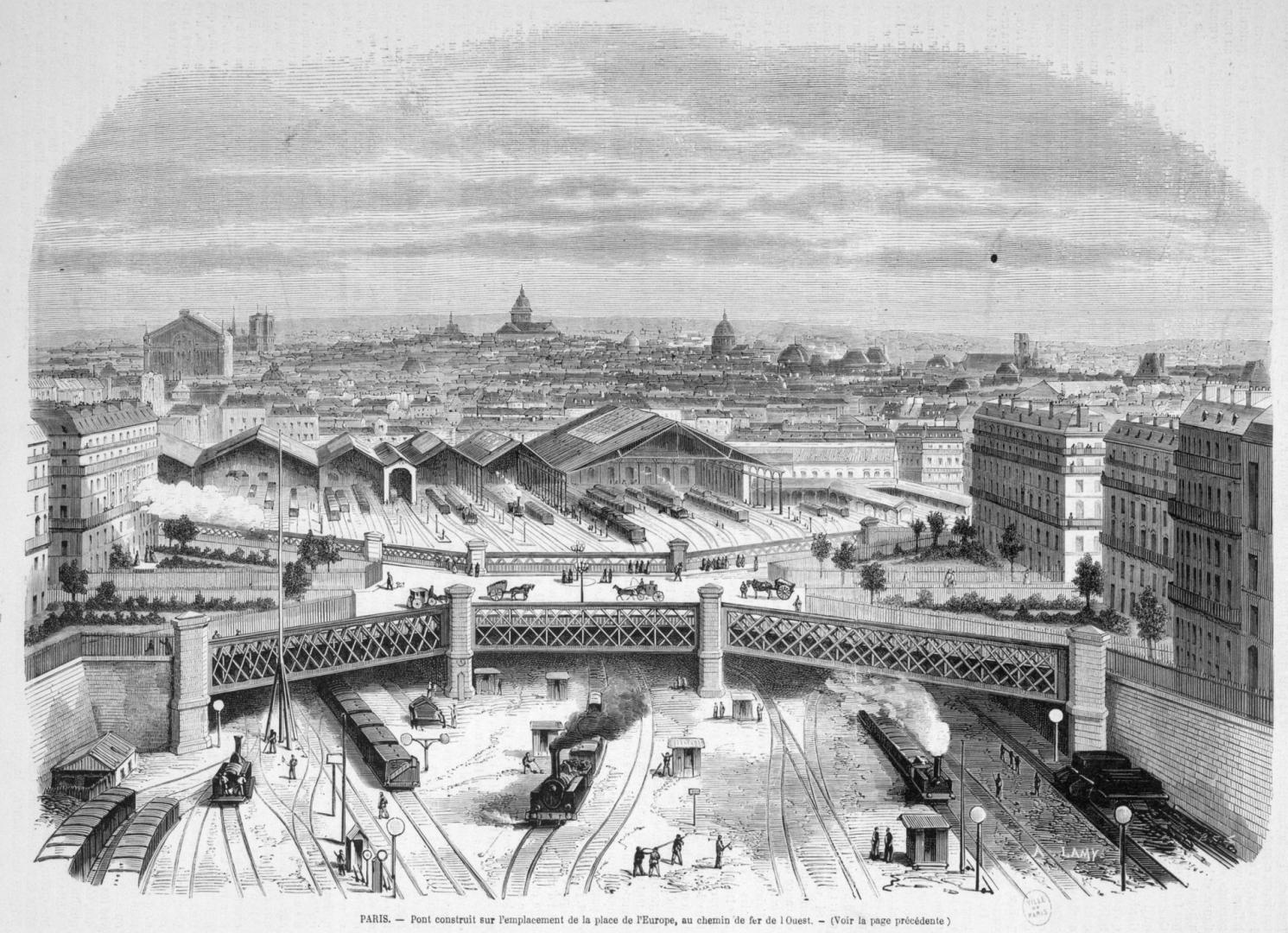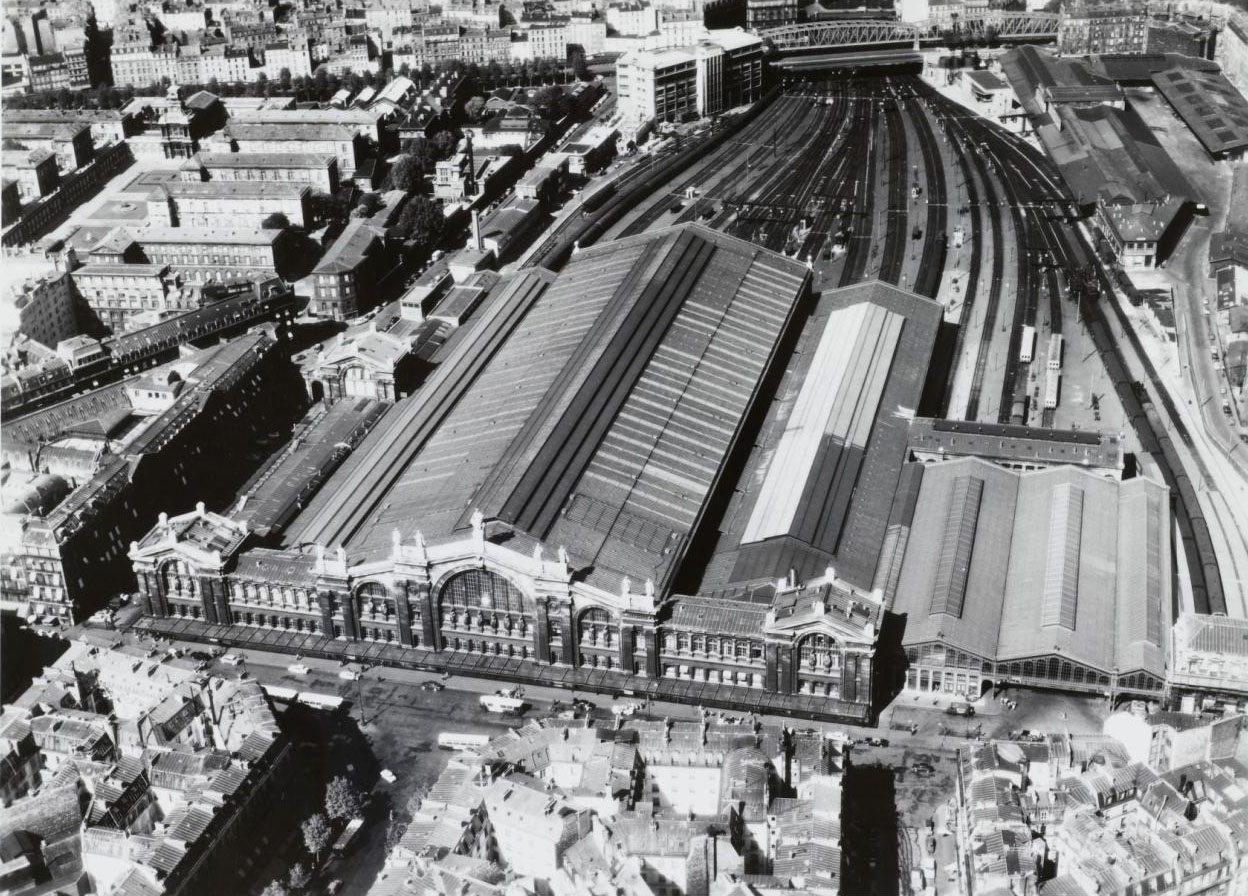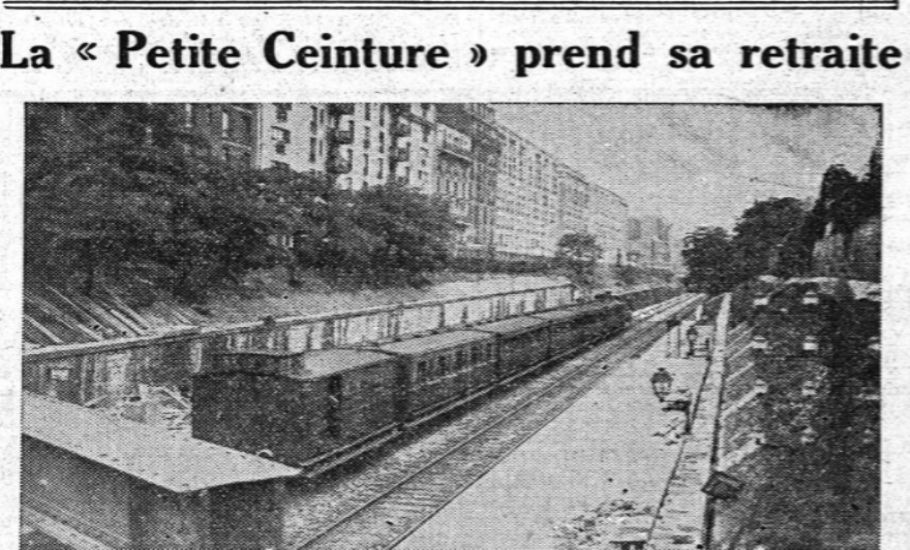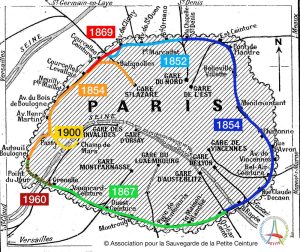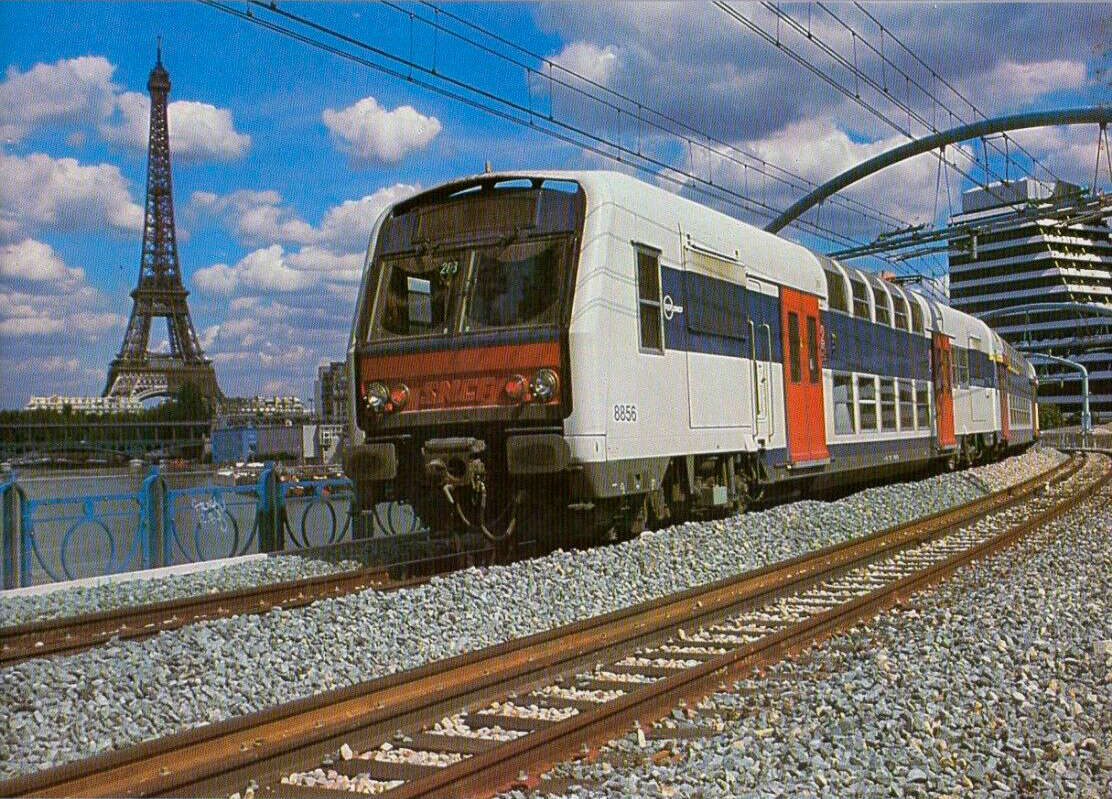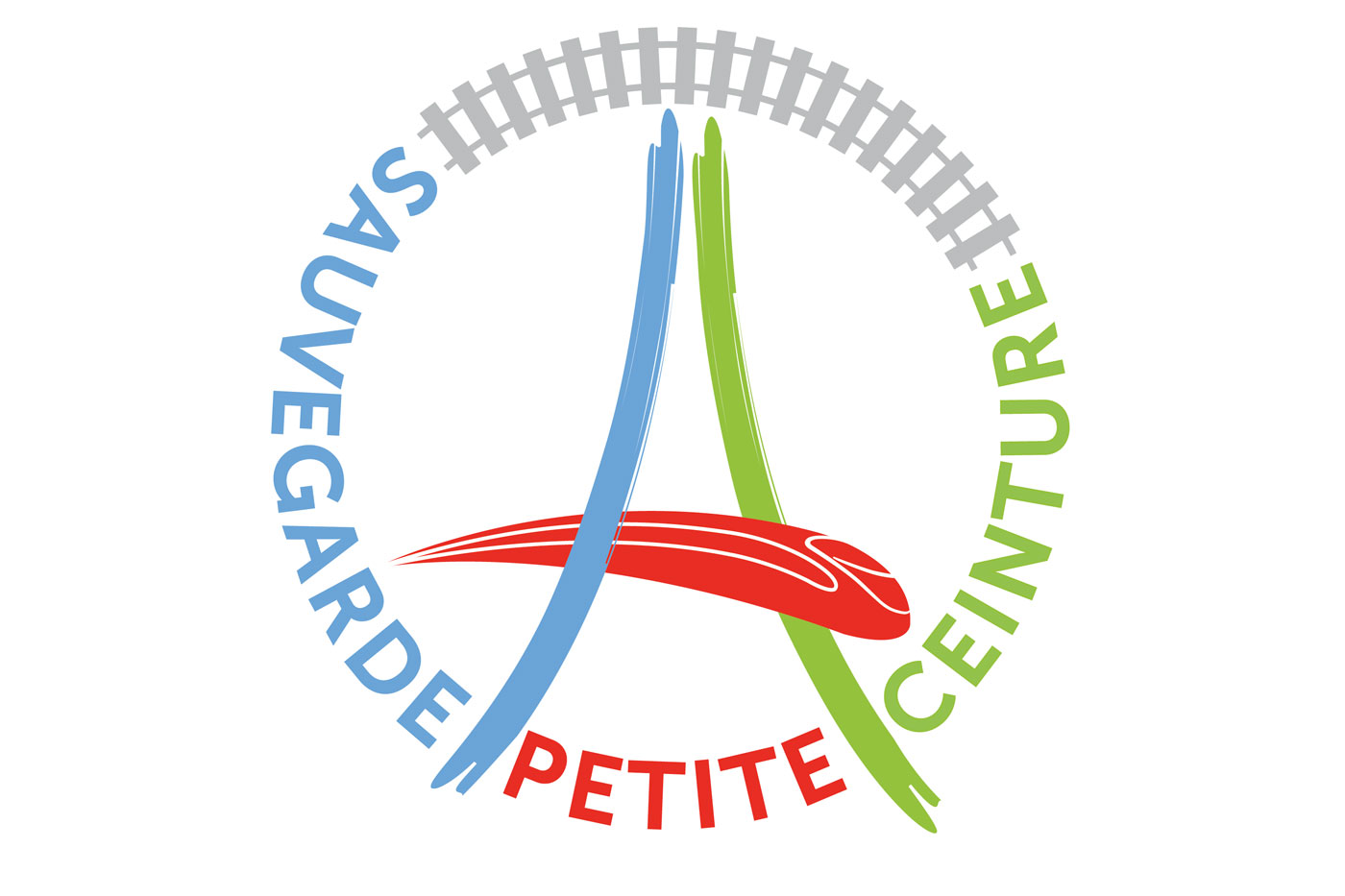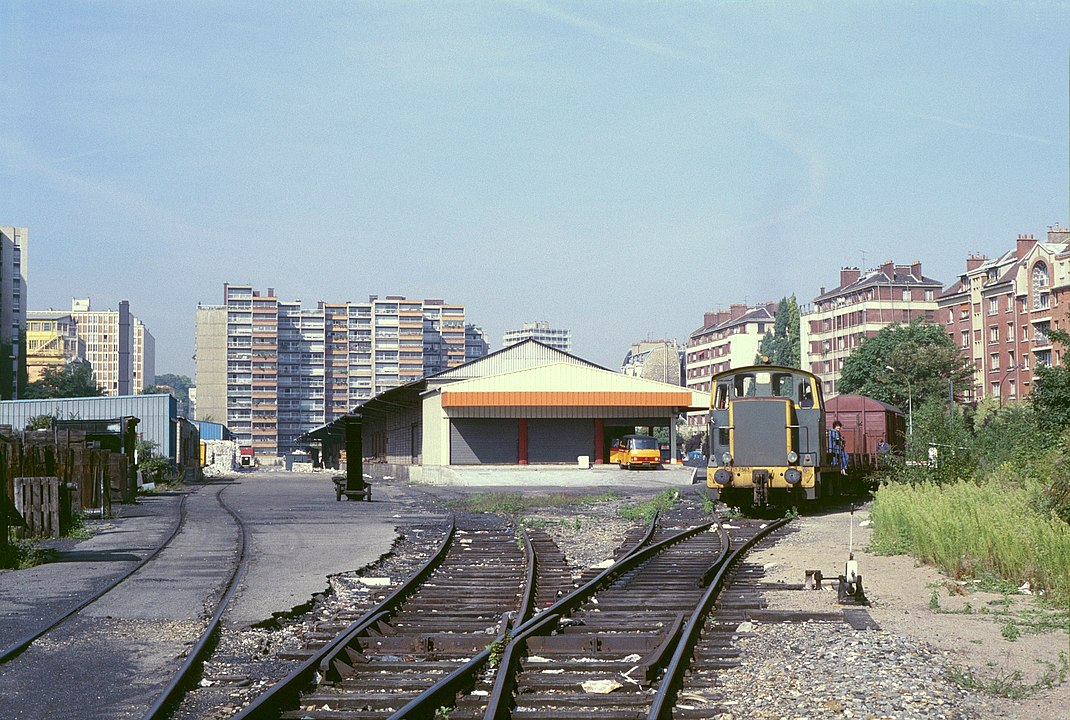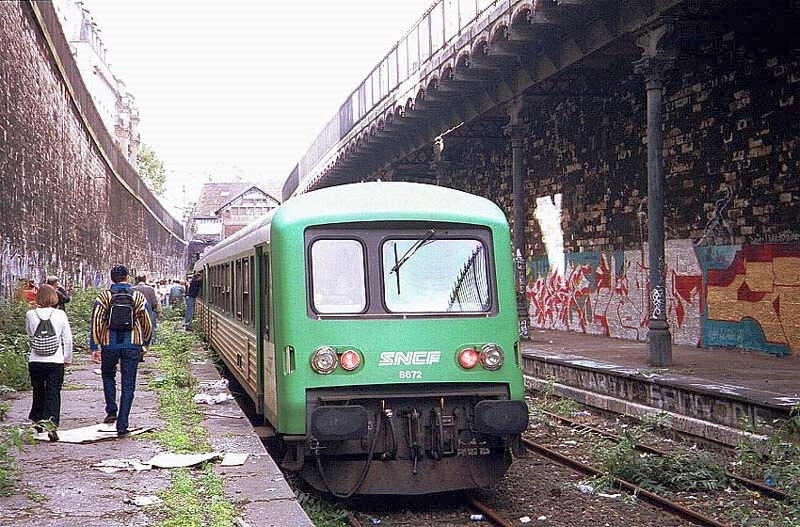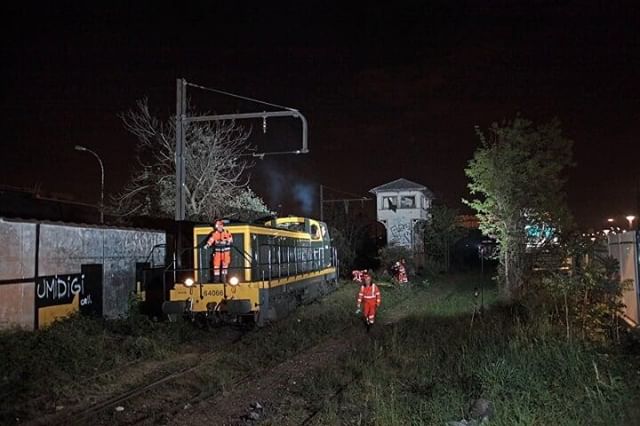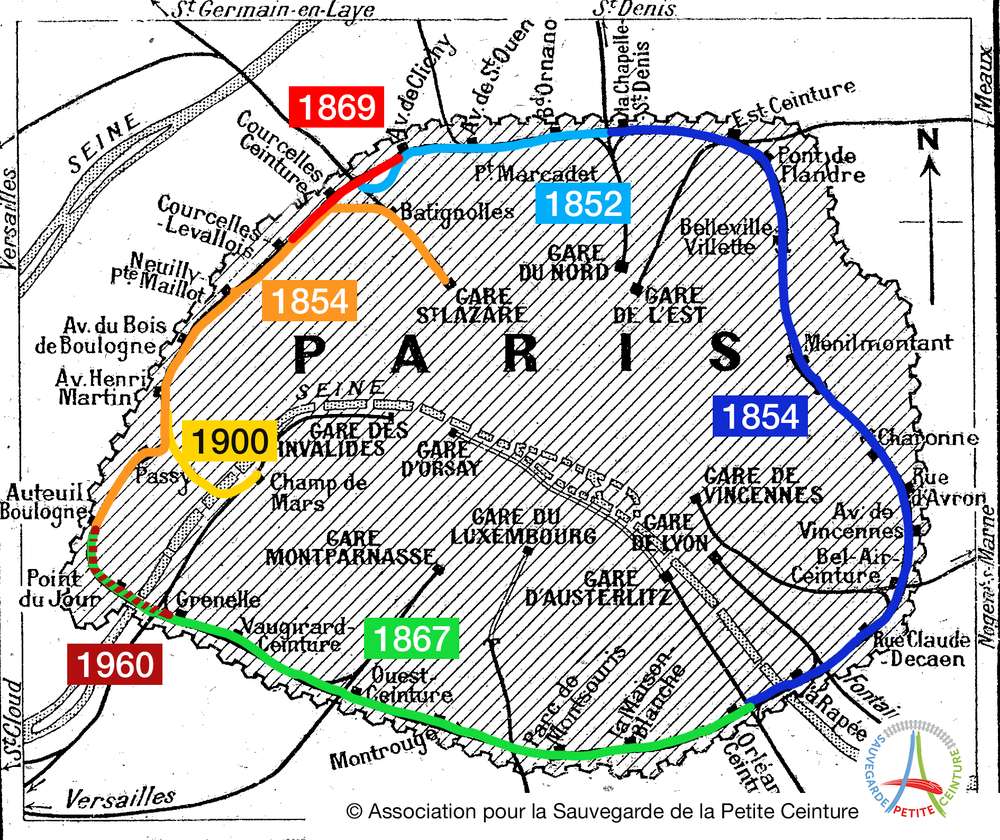The most important steps
of the Petite Ceinture’s history
From the second half of the 19th century to the dawn of the new millenium, the Petite Ceinture railway line wasn’t built in one day.
France’s first passenger line is open in 1837, between the « Embarcadère de l’Europe » to the small city of Le Pecq. During the 1840s, the number of railways grows dramatically. But they’re not connected to a « central station » (and still aren’t to this very day).
Therefore, the Petite Ceinture is created around Paris, following a circular path, as to facilitate transit of freight between the main lines. It was also design to carry troops and soldiers, since it runs within the former fortifications, which were built a couple of decades earlier. Only later did it start to carry passengers.
Its importance rose regularly, helped by the Universal Exhibition which occurred in Paris every 11 years. The passenger service reached its apogee in 1900, where it carried a grand total of 39 million passengers.
Discover below the main dates of the rich history of this unique railway that surrounds the French capital.
Signing of the decree giving birth to the Petite Ceinture railway line
- December 10, 1851
A few days only after his coup d’Etat, Louis-Napoléon Bonaparte signs the decree that gives birth to the Petite Ceinture railway line of Paris.
Opening of the Petite Ceinture’s first section
- December 12, 1852
Opening of the Ligne d’Auteuil
- May 2nd, 1854
Opening of the first freight stations of the Petite Ceinture
- September 15, 1855
The Charonne-marchandises stations opens, followed by the La Petite-Villette (Belleville-Villette) station in 1856. They are the first freight stations of the Petite Ceinture.
The city of Paris reaches its actual size
- January 1st, 1860
The city swallows its former surrounding villages, enclosed within the limits of the Thiers defense wall. Paris reaches is actual size.
The Petite Ceinture carries its first passengers
- July 14, 1862
After being only circulated by freight trains for 10 years, the Petite Ceinture carries its first passengers on July 14, 1862. Nevertheless, only 5 stations are open : Batignolles, Belleville-Villette, Ménilmontant, Charonne and La Râpée-Bercy. The Avenue de Saint-Ouen and Bel-Air station open one year later.
Opening of the Southern section of the Petite Ceinture
- February 25, 1867
Opening of the Petite Ceinture Rive Gauche line, on the left bank of the Seine River, linking the Rapée-Bercy (South-East) and Auteuil-Boulogne (South-West) stations.
To cross the river, the Western Railways Company builds the Point-du-Jour viaduct, a beautiful 175-meters long structure.

Opening of the Grenelle Junction and Champ de Mars station for the Universal Exhibition
- 1867
The station and this small section of tracks are circulated by trains coming from the Saint-Lazare station (via the Grenelle station). After the Exhibition, both tracks and stations are demolished.
Opening of the Courcelles Junction : the circle is complete
- March 25, 1869
A small section of tracks, located at the North-West of Paris, is open. Located between the Avenue de Clichy and Courcelles-Levallois stations, it allows trains to make a full loop around Paris.
The newly built Courcelles-Ceinture station becomes one of the most important nodes of the line.

Opening of the Grande Ceinture
- July 17, 1877
The number of freight and passenger trains grows dramatically on the Petite Ceinture railway, which can hold it much longer. Therefore, a second circular railway, called the Grande Ceinture de Paris, is built at a greater distance from Paris. It’s first section opens in 1877.
Reconstruction of the Grenelle Junction and Champ de Mars station for the Universal Exhibition
- 1878
At the dawn of the 1878 Universal Exhibition, the Grenelle junction and the Champ de Mars station are rebuilt. The architect in charge of the building, Juste Lisch, will later design some of the most prestigious railway stations in Paris (including the Gare Saint-Lazare and Gare des Invalides).
Removal of level crossings
- 1886 – 1889
After several accidents and in anticipation of the 1889 Universal Exhibition, level crossing are finally removed. Infrastructure is moved either on embankments or in trenches. Construction takes places without interrupting the trafic. Several stations are rebuilt for the occasion.
1889 Universal Exhibition
- Mai 6 – October 31, 1889
Once again, the Petite Ceinture plays an active role in the 1889 Universal Exhibition. One of the most remarkable aspects is the Champ de Mars station, located just at the feet of the newly opened Tour Eiffel.
Beginning of the circular service of the Northern Company
- August 1st, 1893
Opening of the Boulainvilliers junction
- April 12, 1900
To facilitate transportation for the 1900 Universal Exhibition, the Boulainvillliers junction opens on April 12, 1900. Trains can run from the Gare Saint-Lazare to the Champ de Mars station in only a quarter of an hour. To cross the river, a new curved bridge, the Pont Rouelle, is also built.

1900 Universal Exhibition
- April 15 – November 12, 1900
The year 1900 can be seen as the apogee of the Petite Ceinture. Thanks to the Universal Exhibition, trains carry more than 39 million passenger.
Opening of Paris metro
- July 1, 1900
After half a century of debates opposing the City of Paris, and the French State and railway Companies, Paris metro is finally open. It is completely independent from any of Paris railway networks. It quickly becomes a huge competitor against the Petite Ceinture – and Paris’s tramways
End of the Western Company’s passenger service
- 1902
Opened in 1867, the passenger service run by the Western Company comes to an end in 1902. Trains of the Northern Company – and those run by the Ceinture Syndicate – continue to carry passenger.
End of the Northern Company’s passenger service
- 1908
Six years after the Western Company, the Northern Company gives up its circular service on the Petite Ceinture.
End of passenger service on the Petite Ceinture
- July 22, 1934
Demolition of the Point-du-Jour viaduct
- 1958 – 1960
End of line for the Ligne d’Auteuil
- January 6, 1985
After 130 years of good and loyal services, the Auteuil line is closed to the public on January 6, 1985.
Opening of the « VMI » branch of the RER line C
- September 25, 1988
Birth of our Association
- December 14, 1992
Created at the end of 1992, the Petite Ceinture Preservation Association (ASPCRF) is officially born on January 6, 1993.
End of freight service on the Southern and Eastern sections
- 1993
End of freight service on the Southern and Eastern sections. Remaining freight stations are closed as well.
Discovery trains on the Petite Ceinture
- Until 2003
Until november, 2003, Discovery Trains run by our Association allow Parisians to discover another side of the city.
Exceptional circulation on the Southern section of the Petite Ceinture
- January 18, 2012
Exceptional circulation of a diesel engine (CC 72084) on the Southern section of the Petite Ceinture, in order to move some coaches from one tunnel to an other.
Exceptional circulation of a train at Bercy on the Petite Ceinture
- July 23, 2019
In order to remove some coaches stored on the Petite Ceinture, a diesel engine (BB 64066) circulates on the Petite Ceinture.
Return of the train on the Petite Ceinture
- December 14, 2021
On the morning of December 14, 2021, the train makes its comeback on the Petite Ceinture.
Hauled by a diesel engine on the Petite Ceinture, on the Batignolles junction, it delivers sand and gravel twice a week to a nearby concrete factory, preventing the entrance of thousands of trucks within the city.
As you’ve now discovered, the Petite Ceinture’s history is the result of a long-term process, which nearly took half a century to complete. Please find a map with all of the Petite Ceinture’s section, along with their opening date. To download the HD version of the file, click here.
Did you know that we do group visits of the Petite Ceinture in English ? If you’re interested, give us a heads up !
